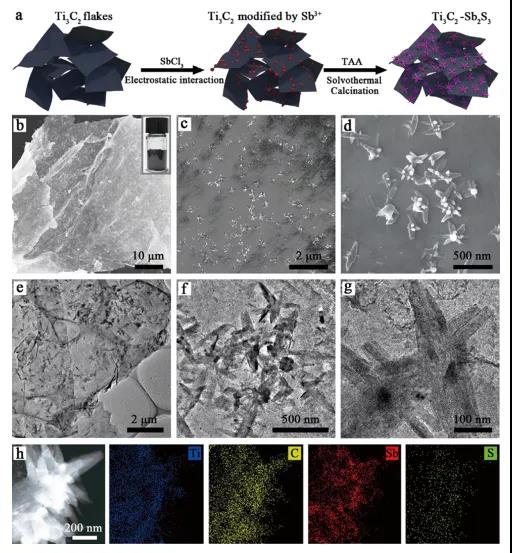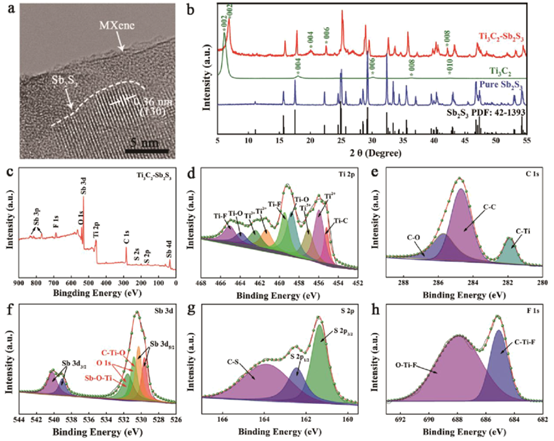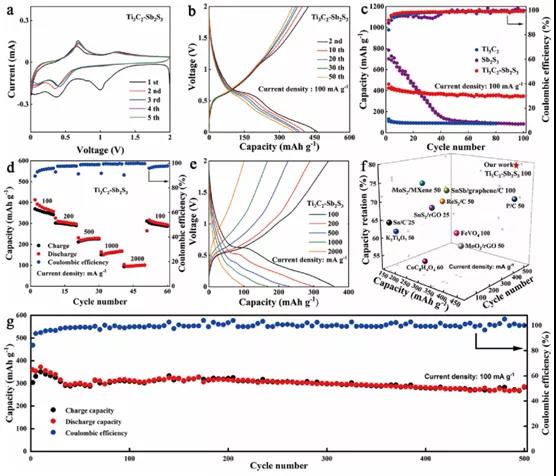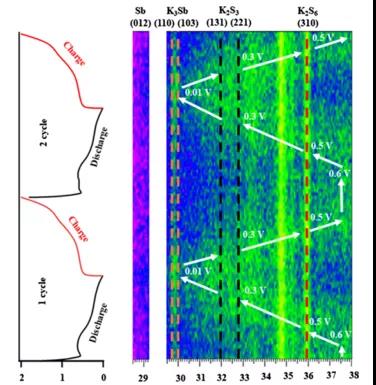
hotline:
17715390137
Tel/Wechat:
18101240246 (Technology)
0512-68565571
Email:mxenes@163.com (Sales Engineer)bkxc.bonnie@gmail.com
Scan the code to follow or search the official account on WeChat:
2D Materials Fronrier After paying attention,
click on the lower right corner to contact us,
Enter enterprise WeChat.
Professional Services Online



pepoles increasing demand for electronic devices and renewable energy makes rechargeable batteries need to have lower costs and higher energy density. Although lithium-ion batteries have achieved great success,they are limited by the limited lithium reserves they are limited limited by the limited lithium reserves in the earth
crust (only 20 ppm), and their application prospects in large-scale electric energy storage systems are not optimistic. Potassium ion batteries (PIBs) are a future alternative, thanks to the low cost of the natural abundance of potassium (17,000 ppm). In addition, potassium has a lower standard potential (-2.93 V vs. standard hydrogen electrode) and is very similar to lithium (-3.04 V), which indicates that potassium ion batteries can have a higher discharge voltage platform and high energy density.
Researchers are committed to exploring materials that can be used in the anode of potassium ion batteries. The main challenge is the large K+ radius (1.38 Angstroms), which leads to poor ion diffusivity in most electrodes, although its smaller Stokes’ radius can promote ion transport kinetics in the electrolyte. In addition, the huge volume expansion during the repeated K+ embedding and de-embedding process will cause chalking, which in turn causes capacity degradation. In previous reports, carbon-containing materials have received extensive attention due to their stable cycle performance. However, the theoretical capacity of carbon-based materials is generally low and the synthesis process is complicated. Anode materials based on transformation and alloying reactions can produce higher theoretical capacity, especially Sb2S3, which has been extensively studied in lithium/sodium batteries, but there are few reports in potassium batteries.

Recently, Professor Quanhui Liu of Hunan University and Professor Bingan Lu of Fujian Strait Industrial Graphene Technology Institute published a research paper titled: A Sb2S3 Nanoflower/MXene Composite as an Anode for Potassium Ion Batteries in the internationally renowned academic journal ACS Applied Materials Interfaces, report A self-assembled Sb2S3 nanoflower on the surface of MXene synthesized by solvothermal reaction and annealing treatment has excellent potassium storage performance.


Figure 1. Preparation process and microscopic morphology characterization of Ti3C2-Sb2S3 composite.

Figure 2. HRTEM image and physical composition characterization of Ti3C2-Sb2S3 composite.

Figure 3. The electrochemical performance test of the potassium ion battery of Ti3C2-Sb2S3 composite.

Figure 4. In-situ XRD Contour diagram of pure Sb2S3 during charging and discharging.

Figure 5. Stability and electrochemical performance of Ti3C2-Sb2S3 composite during cycling.

In summary, the Ti3C2 MXene surface self-assembled Sb2S3 nanoflower anode material prepared in this article benefits from the high conductivity of the Ti3C2 matrix and the limitation of volume expansion, the high capacity contribution of Sb2S3 based on the conversion and alloying reaction, and The strong interface contact between Sb2S3 and Ti3C2 gives it outstanding potassium storage performance. It can produce a high reversible capacity of 461 mAh g-1 at a current density of 100 mA g-1, a long cycle life with a capacity retention rate of 79% after 500 cycles, and excellent rate performance (at 2000 mA g-1 It can maintain a capacity of 102 mAh g-1 at a current density). Ti3C2-Sb2S3 anode inspired the design strategy and direction of new anode materials for potassium ion batteries.
Literature link:
https://doi.org/10.1038/s41467-020-19992-3
Source: MXene Frontier
This information is from the Internet for academic exchanges. If there is any infringement, please contact us and delete it immediately

| Reminder: Beijing Beike New Material Technology Co., Ltd. supplies products only for scientific research, not for humans |
| All rights reserved © 2019 beijing beike new material Technology Co., Ltd 京ICP备16054715-2号 |